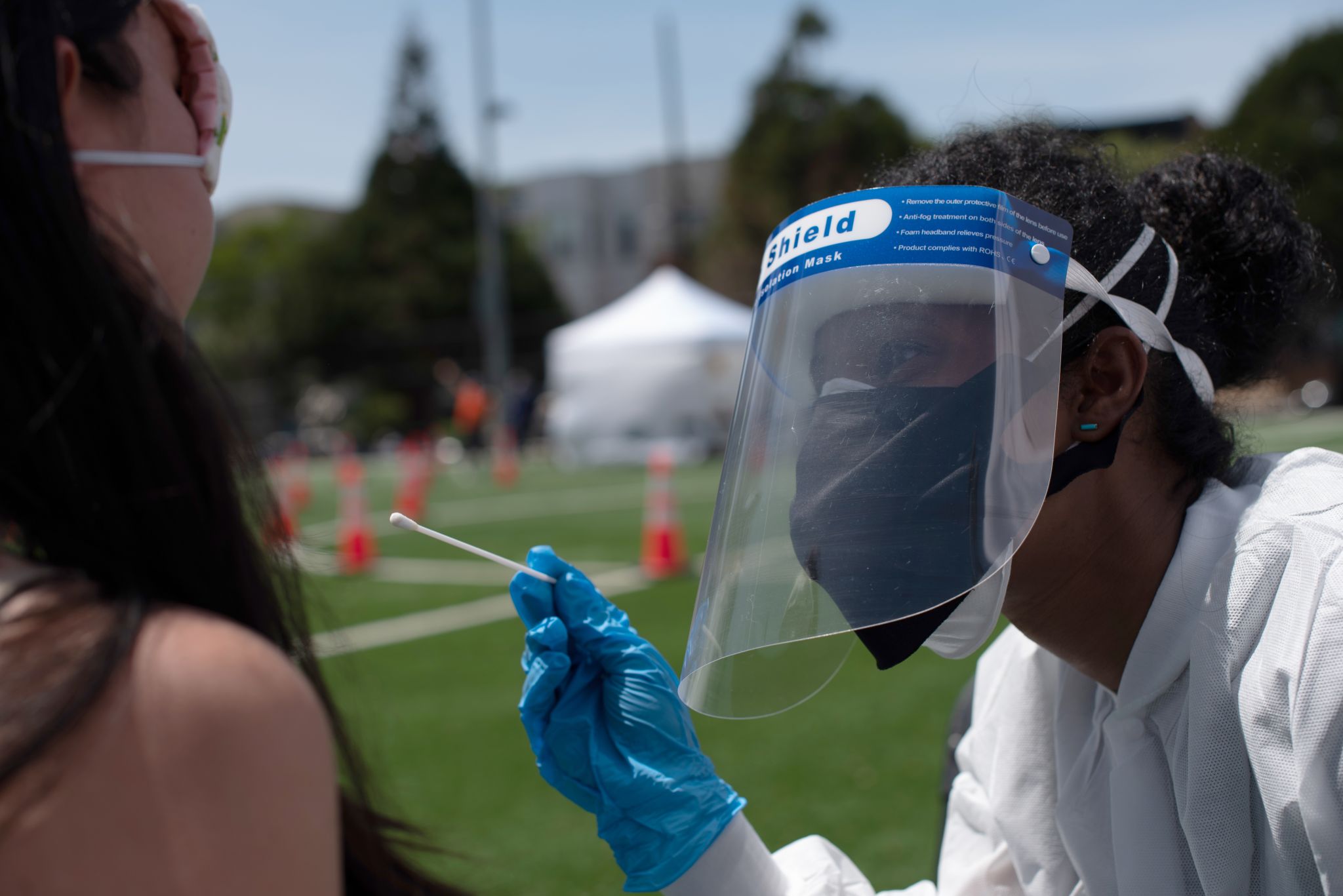By Amy Graff, SFGATE
Updated
-

Medical student and volunteer Yohana Keleta swabs Mission resident Anna Zhong for COVID-19 during UCSF’s mass testing study at Garfield Square. A comprehensive study of the virus’s spread held by UC San Francisco researchers in partnership with San Francisco Department of Public Health and Zuckerberg General, mass testing is provided free of charge for the 5700 residents in a one mile square radius of the Mission district. SAN FRANCISCO – APRIL 25, 2020 (Mike Kai Chen/Freelance)
Medical student and volunteer Yohana Keleta swabs Mission resident Anna Zhong for COVID-19 during UCSF’s mass testing study at Garfield Square. A comprehensive study of the virus’s spread held by UC San
Photo: Mike Kai Chen
Medical student and volunteer Yohana Keleta swabs Mission resident Anna Zhong for COVID-19 during UCSF’s mass testing study at Garfield Square. A comprehensive study of the virus’s spread held by UC San Francisco researchers in partnership with San Francisco Department of Public Health and Zuckerberg General, mass testing is provided free of charge for the 5700 residents in a one mile square radius of the Mission district. SAN FRANCISCO – APRIL 25, 2020 (Mike Kai Chen/Freelance)
Medical student and volunteer Yohana Keleta swabs Mission resident Anna Zhong for COVID-19 during UCSF’s mass testing study at Garfield Square. A comprehensive study of the virus’s spread held by UC San
Photo: Mike Kai Chen
For more coverage, visit our complete coronavirus section here.
In a major testing effort led by UC San Francisco in the Mission District, 2.1% of the 4,160 people tested for COVID-19 were positive. Of those who tested positive, 90% have been leaving their homes for work.
“These were frontline workers, they had to work outside of the home, either that or they were furloughed or unemployed,” Dr. Diane Havlir, chief of the UCSF Division of HIV, Infection, and Global Disease at San Francisco General, told KCBS.
Ninety-five percent of positive individuals were of Latinx heritage.
“The COVID-19 pandemic is disproportionately affecting the Latinx community in San Francisco, both in terms of infection rates and economic hardship, and we have been partnering very closely with the Latino Task Force for COVID-19 to support this community by working to disrupt transmission of the disease,” Dr. Carina Marquez, an assistant professor of medicine at UCSF, said in a statement.
From April 25 to 28, free, voluntary COVID-19 testing was offered to every resident in a 16-block area running from Cesar Chavez to 23rd Street and South Van Ness to Harrison Street (see a map in the gallery above). This is the second most dense area of the city and a little over half of the residents living here were tested.
While turnout for the study was considered a success, researchers said those people who didn’t access testing feared being tracked by government agencies and the potential negative impact on local businesses if the neighborhood is branded a COVID-19 hotspot. Some also were afraid of the potential consequences of isolation if they tested positive.
Researchers conducted two types of tests to identify those individuals who are currently infected and those who previously had the virus. The diagnostic test for active COVID-19 was implemented by collecting samples with nasal swabs while the antibody test was done with a finger-prick to collect a blood sample. Results were available within 72 hours.
People who tested positive received immediate follow-up calls from UCSF infectious disease experts while those who test negative are expected to continue following the shelter-in-place order “because of the possibility of false negative test results and a general lack of information about the potential for reinfection with the disease,” according to a statement from UCSF
The study is meant to reveal the invisible spread of the virus and help inform future testing efforts in other communities.
“All our public health decisions, including when it will be possible to relax regional and statewide shelter-in-place orders, are driven by rough assumptions about how this virus behaves based on very limited data,” said Dr. Bryan Greenhouse, an associate professor of medicine at UCSF, in a statement.
Greenhouse said studying the spread in detail will give researchers “crucial data points that we can extrapolate to better predict how to control the virus in similar communities nationwide.”
UCSF conducted a similar effort in the coastal town of Bolinas. Of the nearly 1,800 people tested, nobody was positive.
Amy Graff is a digital editor with SFGATE. Email her: [email protected].







